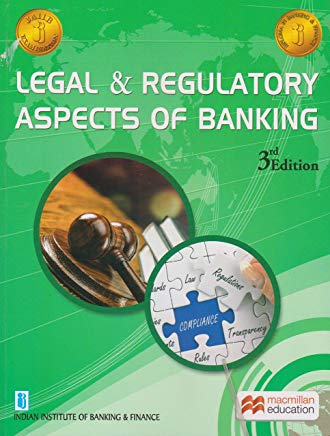JAIIB LRAB Unit 34 - Lok Adalats (Year: 2019)
LOK ADALATS
Lok Adalt is similar to a civil court which can be organized by the State Authority, the Distt. Authority, the Supreme Court Legal Service Committee or High Court Legal Services Committee, at such intervals and places as deemed appropriate. The Lok Adalts are created under Legal Services Authority Act 1987.
Jurisdiction and types of case : A Lok Adalt has jurisdiction to determine and arrive at a compromise or settlement between the parties to the dispute. It deals with the cases where (a) the parties to the dispute agree to refer the issue to Lok Adalt; (b) one of the parties approaches the Lok Adalt and Lok Adalt is satisfied that there are chances of settlement. In such case, the Adalt issues notice to the other party; (c) in the opinion of the Lok Adalt, the cognizance of the dispute can be taken. Cases that cannot be taken up: The offences, which are compoundable under any Law, cannot be brought within the purview of the Lok Adalt.
This means that the Lok Adalt has no authority of its own to pass judgements.
Awards of Lok Adalt: Their awards are in the form of consent decrees. NO appeal lies against such Awards which is binding on all parties.
Procedure and powers: Civil Procedure Code is applicable which means the Lok Adalt can send summons, take evidence on oath, initiate exparte proceedings, and determine court procedures. Where compromise is not reached: The case shall be returned back to the court from which the reference was received for continuing with the case, there.
1. RBI GUIDELINES ON LOK ADALTS With a view to making increasing use ;of the forum of Lok Adalats to settle banking disputes involving smaller amounts, RBI during April 2001 advised banks and financial institutions to follow the following guidelines for implementation: Amount - Cases involving an amount up to Rs.20 lakh (RBI enhanced it from Rs.5 lac, Aug 03, 2004) may be referred to Lok Adalats.
2. Borrowers : All NPA accounts (other than time barred), both suit filed and non-suit filed, which are in "doubtful" and "loss" category. No cut off date is suggested since Lok Adalat is an on-going process.
3. Settlement Formula : The settlement formula would be flexible. Certain essential parameters, as under, should be kept in view:
a. A decree should be sought from the Lok Adalat for the principal amount and interest claimed in the suit, and after full payment of decree amount, a discharge certificate should be issued by the bank / financial institution.
b. The repayment period should be within one to three years.
c. The negotiated agreement with the borrower should contain a default clause in terms of which if borrower does not pay installments due regularly, within the repayment period, entire debt will fall due for payment & bank may initiate legal proceedings.
d. The Officers representing the institutions should have sufficient powers to accept the compromises worked out within the policy framework laid down by the Board of Directors of each institution, while attending Lok Adalat and should respond pro-actively to the suggestion of the Presiding Officer of the Lok Adalat.
DRT LOKADALATS
Banks can take up matters where outstanding exceed the ceiling of Rs.20 lac, with Lok Adalats organised by the Debt Recovery Tribunals / Debt Recovery Appellate Tribunals.
Supreme Court has suggested that personal loan cases up to Rs.10 lac should preferably settled through Lok Adalats.
Organisational arrangements
The individual banks and fmancial institutions should be more pro-active and should take the responsibility of organising Lok Adalats. The institutions should get in touch with State / District / Taluk level Legal Services Authorities for organising Lok Adalats. The banks should report the progress to RBI, at quarterly intervals within one month from the quarters ending March, June, September and December. Reserve Bank of India monitors the progress made by the institutions in effecting recovery under the scheme.
JAIIB Study Material
| JAIIB Paper 1 Study Material |
| JAIIB Paper 2 Study Material |
| JAIIB Paper 3 Study Material |


